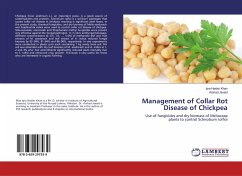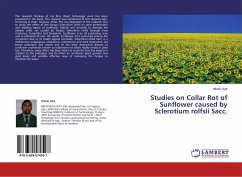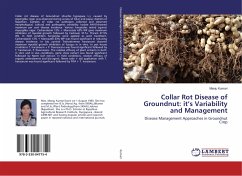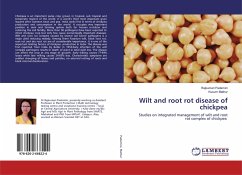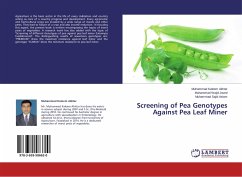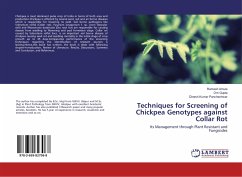
Techniques for Screening of Chickpea Genotypes against Collar Rot
Its Management through Plant Resistant and Fungicides
Versandkostenfrei!
Versandfertig in 6-10 Tagen
27,99 €
inkl. MwSt.

PAYBACK Punkte
14 °P sammeln!
Chickpea is most dominant pulse crop of India in terms of both area and production.Chickpea is affected by several seed, soil and air borne diseases which is responsible for lowering its yield. Soil borne pathogens like Sclerotium rolfsii (Collar rot), Fusarium oxysporium f. sp. ciceri (Vascular wilt) and Rhizoctonia bataticola (Dry root rot) are responsible for causing disease from seedling to flowering and pod formation stage. Collar rot caused by Sclerotium rolfsii Sacc. is an important soil borne disease of chickpea causing seed rot and seedling mortality in the initial stage of crop growt...
Chickpea is most dominant pulse crop of India in terms of both area and production.Chickpea is affected by several seed, soil and air borne diseases which is responsible for lowering its yield. Soil borne pathogens like Sclerotium rolfsii (Collar rot), Fusarium oxysporium f. sp. ciceri (Vascular wilt) and Rhizoctonia bataticola (Dry root rot) are responsible for causing disease from seedling to flowering and pod formation stage. Collar rot caused by Sclerotium rolfsii Sacc. is an important soil borne disease of chickpea causing seed rot and seedling mortality in the initial stage of crop growth up to 45 days.Comparative performance of the screening techniques regarding the identification of resistant sources is lacking,Hence,this book has written. the book is deals with following chapter-Introduction, Review of Literature, Results, Discussions, Summery and Conclusion, and References.





